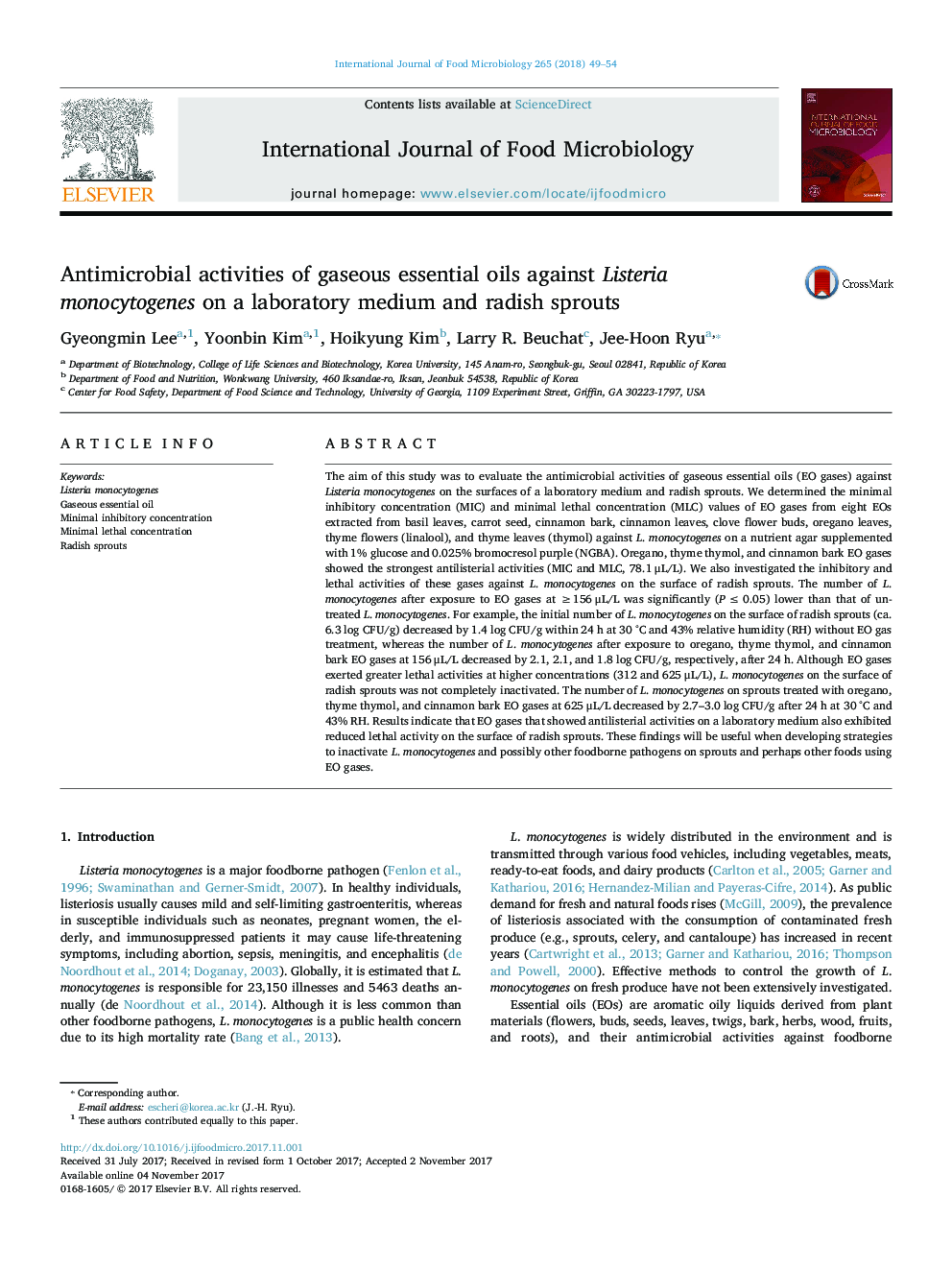| Article ID | Journal | Published Year | Pages | File Type |
|---|---|---|---|---|
| 8844355 | International Journal of Food Microbiology | 2018 | 6 Pages |
Abstract
The aim of this study was to evaluate the antimicrobial activities of gaseous essential oils (EO gases) against Listeria monocytogenes on the surfaces of a laboratory medium and radish sprouts. We determined the minimal inhibitory concentration (MIC) and minimal lethal concentration (MLC) values of EO gases from eight EOs extracted from basil leaves, carrot seed, cinnamon bark, cinnamon leaves, clove flower buds, oregano leaves, thyme flowers (linalool), and thyme leaves (thymol) against L. monocytogenes on a nutrient agar supplemented with 1% glucose and 0.025% bromocresol purple (NGBA). Oregano, thyme thymol, and cinnamon bark EO gases showed the strongest antilisterial activities (MIC and MLC, 78.1 μL/L). We also investigated the inhibitory and lethal activities of these gases against L. monocytogenes on the surface of radish sprouts. The number of L. monocytogenes after exposure to EO gases at â¥Â 156 μL/L was significantly (P â¤Â 0.05) lower than that of untreated L. monocytogenes. For example, the initial number of L. monocytogenes on the surface of radish sprouts (ca. 6.3 log CFU/g) decreased by 1.4 log CFU/g within 24 h at 30 °C and 43% relative humidity (RH) without EO gas treatment, whereas the number of L. monocytogenes after exposure to oregano, thyme thymol, and cinnamon bark EO gases at 156 μL/L decreased by 2.1, 2.1, and 1.8 log CFU/g, respectively, after 24 h. Although EO gases exerted greater lethal activities at higher concentrations (312 and 625 μL/L), L. monocytogenes on the surface of radish sprouts was not completely inactivated. The number of L. monocytogenes on sprouts treated with oregano, thyme thymol, and cinnamon bark EO gases at 625 μL/L decreased by 2.7-3.0 log CFU/g after 24 h at 30 °C and 43% RH. Results indicate that EO gases that showed antilisterial activities on a laboratory medium also exhibited reduced lethal activity on the surface of radish sprouts. These findings will be useful when developing strategies to inactivate L. monocytogenes and possibly other foodborne pathogens on sprouts and perhaps other foods using EO gases.
Related Topics
Life Sciences
Agricultural and Biological Sciences
Food Science
Authors
Gyeongmin Lee, Yoonbin Kim, Hoikyung Kim, Larry R. Beuchat, Jee-Hoon Ryu,
